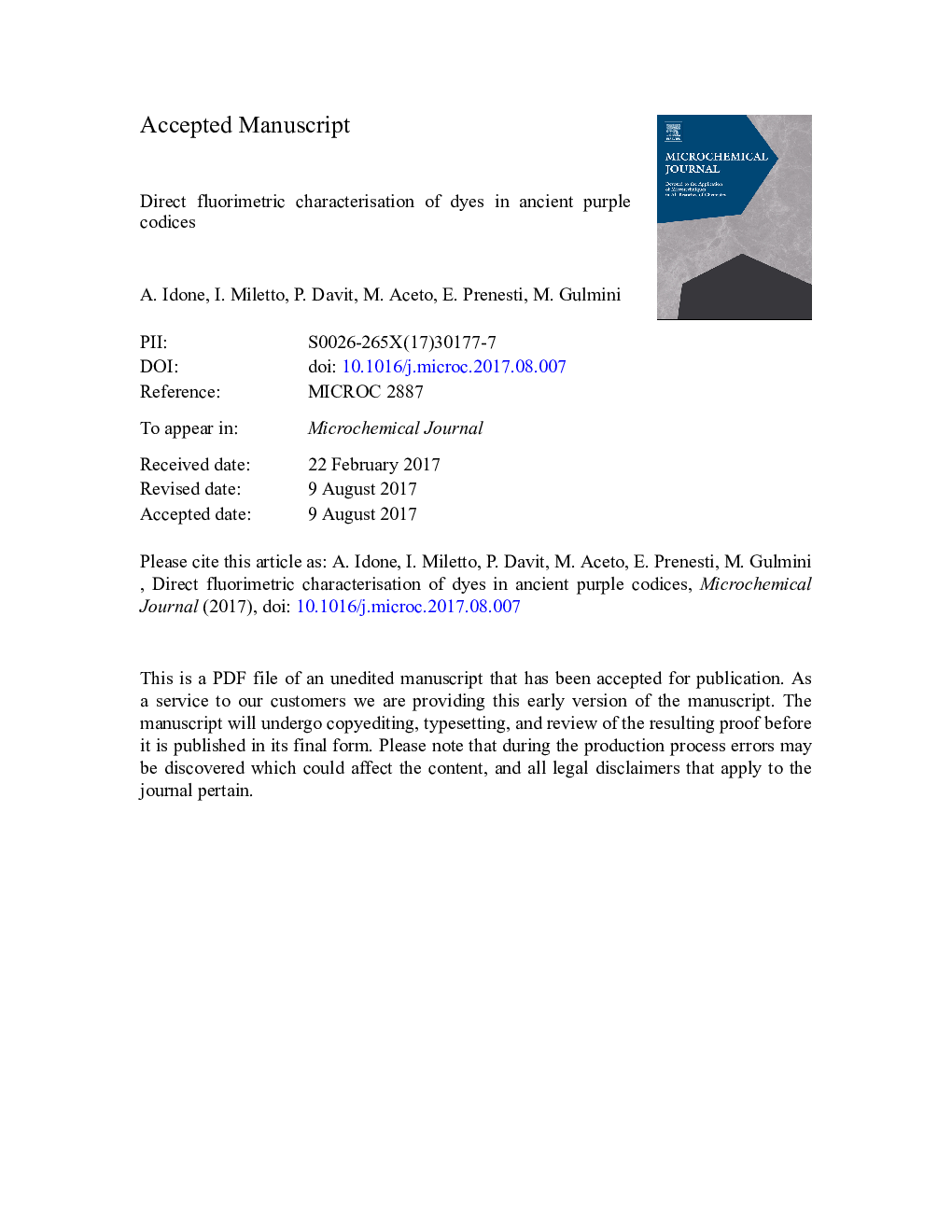| Article ID | Journal | Published Year | Pages | File Type |
|---|---|---|---|---|
| 5139226 | Microchemical Journal | 2017 | 21 Pages |
Abstract
The identification of the purple dyes employed to colour purple codices is an intriguing task, as sampling is seldom permitted on these precious manuscripts and thus scientists should rely only on in situ analytical techniques. The availability of a small sample from the 6th century Codex Brixianus, conserved at Biblioteca Civica Queriniana (Brescia, Italy), allowed us to perform an in depth fluorimetric survey of the purple parchment of this artwork. Preliminary in situ fluorimetric measurements widened previous analyses on the same manuscript as they revealed the presence of both folium and orchil in some pages. In addition, emission fluorescence and luminescence lifetime measurements were performed on the sample from Codex Brixianus and on a set of reference parchments dyed with folium, orchil or a mixture of these two dyes. These measurements confirmed and narrowed the results obtained with in situ fluorimetry, thus opening the discussion about the unusual manufacturing technique of this peculiar purple codex. Moreover, they are relevant to face other possible situations in which the two dyes have been used together to obtain the purple colour.
Related Topics
Physical Sciences and Engineering
Chemistry
Analytical Chemistry
Authors
A. Idone, I. Miletto, P. Davit, M. Aceto, E. Prenesti, M. Gulmini,
